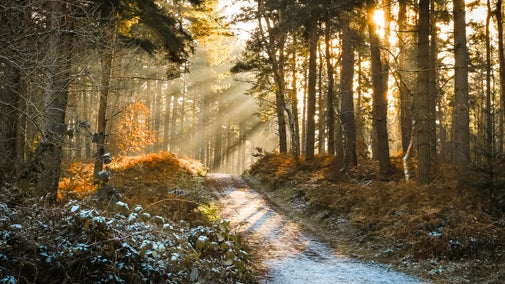Clumber Park curiosities long walk
Nottinghamshire & Lincolnshire
A 7.5-mile route on good paths, this walk visits both familiar and more hidden features of Clumber Park, spanning the periods when it was a ducal estate and a Second World War munitions store.
Near to
Clumber ParkStart point
National Trust Clumber Park main car park, grid ref SK625745Trail information
More near here
The Robin Hood Way at Clumber Park
Take a relaxing walk along The Robin Hood way: a 105-mile-long route across Nottinghamshire, which enters Clumber Park twice as it winds itself through the county.

Clumber's walk for all seasons
This gentle Clumber Park walk offers varied landscapes including woodland and heathland, plus a short detour to Clumber Bridge with a splended view of the lake and the Chapel.

North West Clumber walk: a tale of two bridges
Get off the beaten track on this scenic 7.5-mile walk through lesser-known parts of Clumber Park, taking in views of two bridges.

Get in touch
Our partners

We’ve partnered with Cotswold Outdoor to help everyone make the most of their time outdoors in the places we care for.
You might also be interested in
Getting active at Clumber Park
From lakeside runs to woodland rides, Clumber Park has 20 miles of trails for cyclists, runners and walkers to explore. Bridlepaths through the estate provide an opportunity to explore on horseback.

Visiting Clumber Park
With 3,800 acres of parkland to explore, there's so much to see and do at Clumber Park this autumn.

Visiting Clumber Park with your dog
Clumber Park is a three pawprint rated place. Exploring the 3,800 acres of beautiful parkland with your dog by your side is one of the best ways to see Clumber Park.

Cotswold Outdoor: our exclusive walking partner
Learn about the National Trust’s ongoing partnership with Cotswold Outdoor. Find out how they help us care for precious places and the exclusive discount available for National Trust supporters.

Staying safe at National Trust places
The special places in National Trust care sometimes come with a few risks for visitors, be it coastline or countryside. Find out how to keep safe throughout your visits.

Follow the Countryside Code
Help to look after National Trust places by observing a few simple guidelines during your visit and following the Countryside Code.

Walking in Nottinghamshire and Lincolnshire
From the parkland, woods and lakeside views of Clumber Park to the ancient woodland around Belton House, discover where to go for the best walks in Nottinghamshire and Lincolnshire.

Walking
Explore some of the finest landscapes in our care on coastal paths, accessible trails, woodland walks and everything in between. Find the best places to walk near you.



